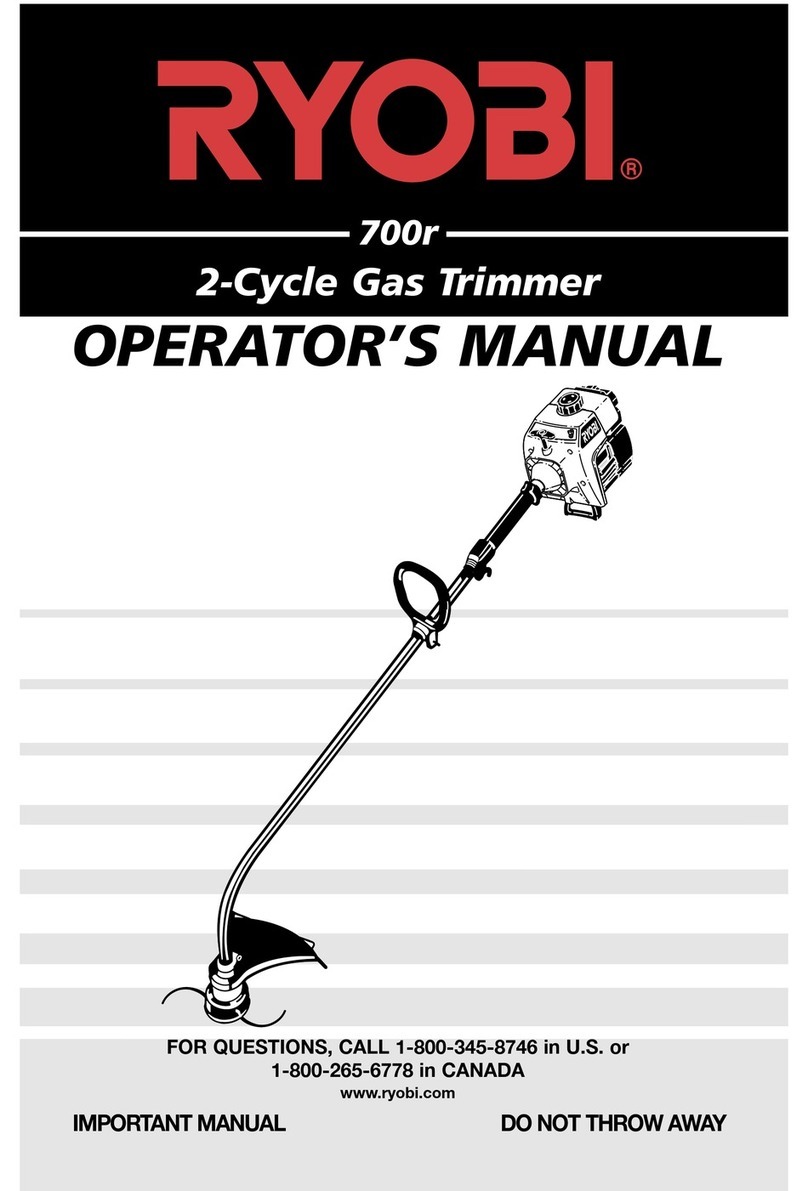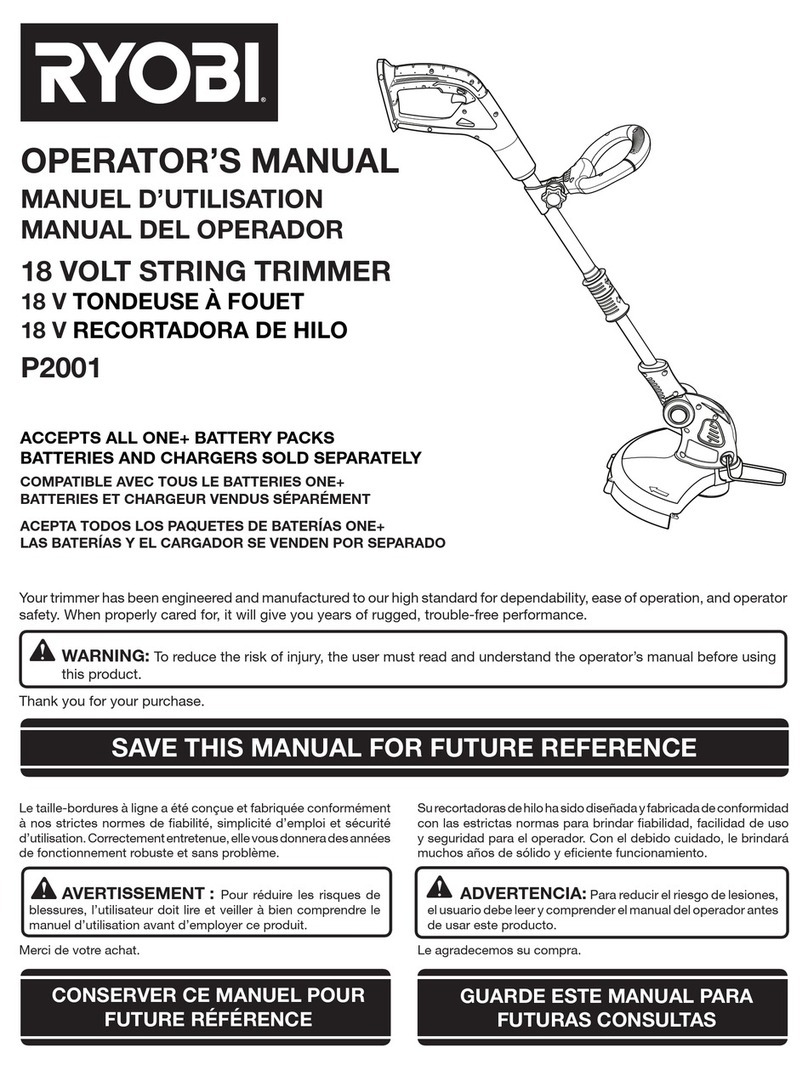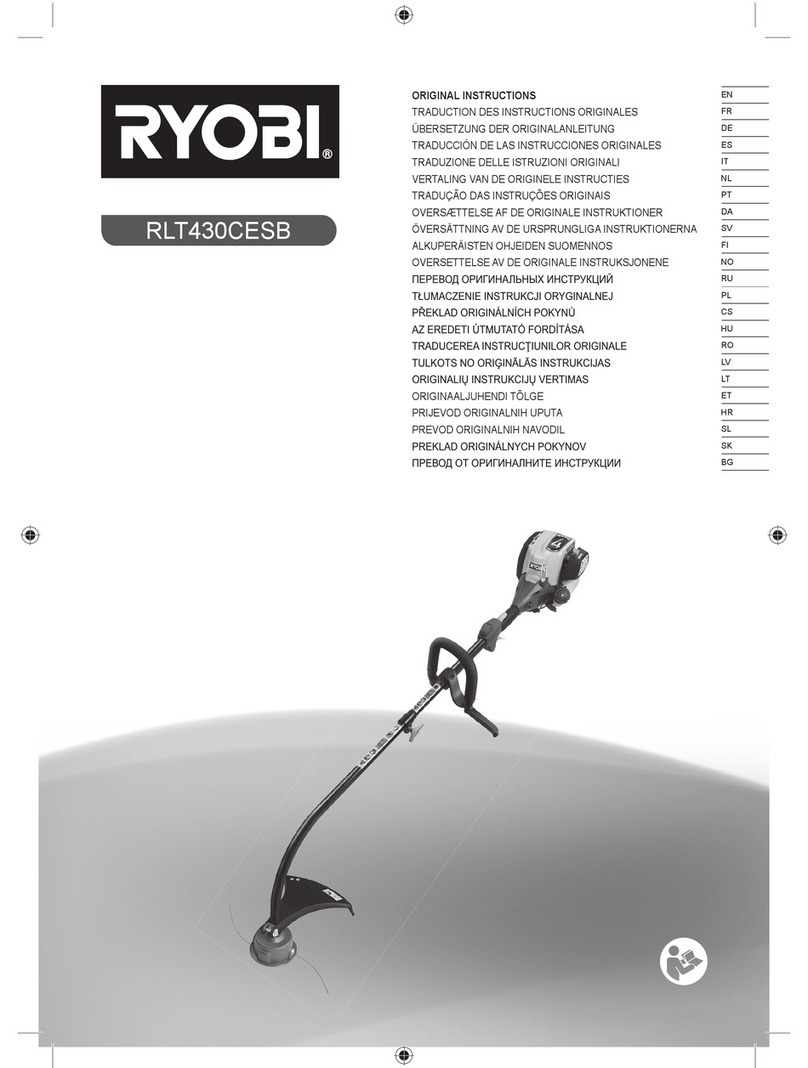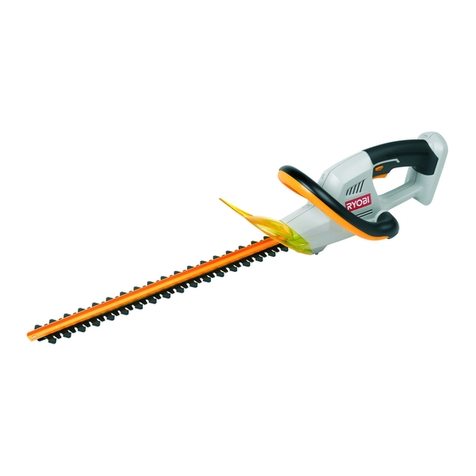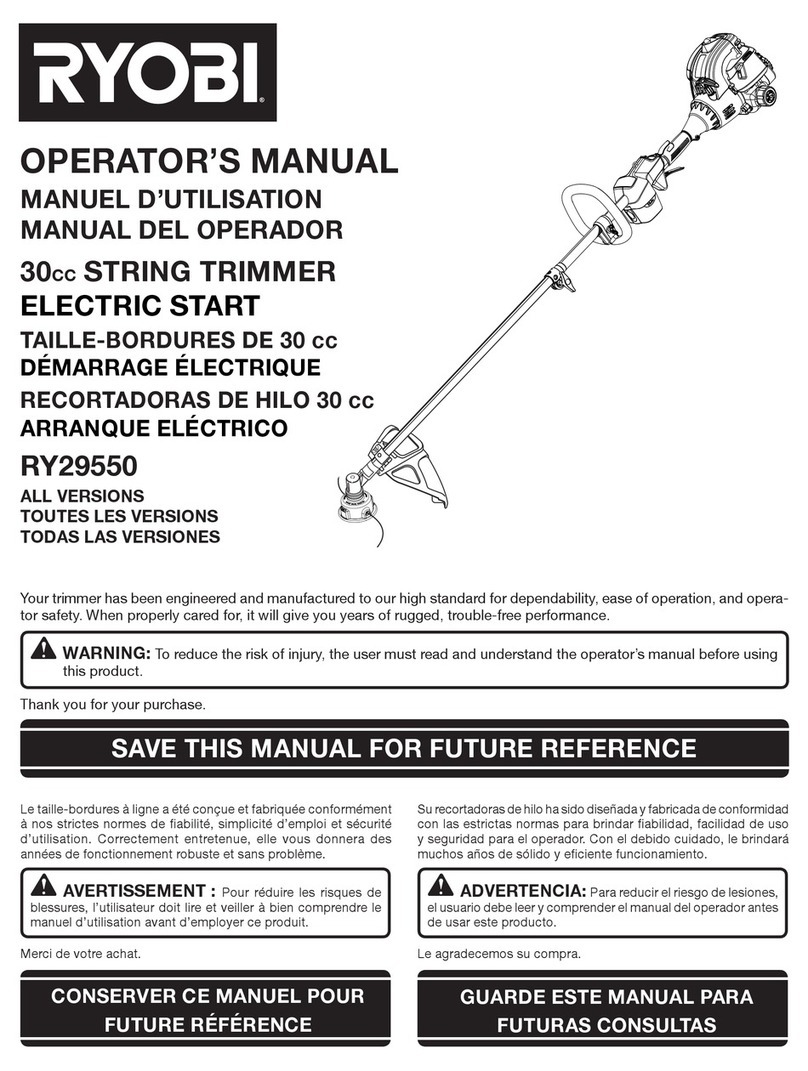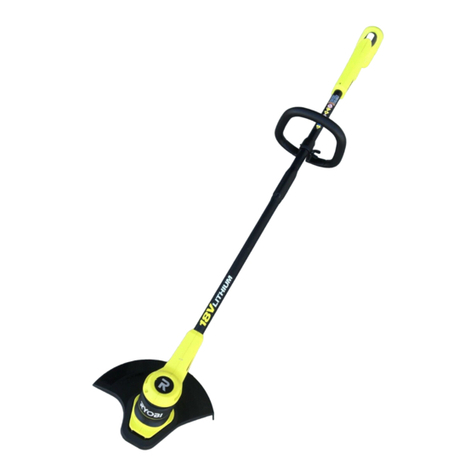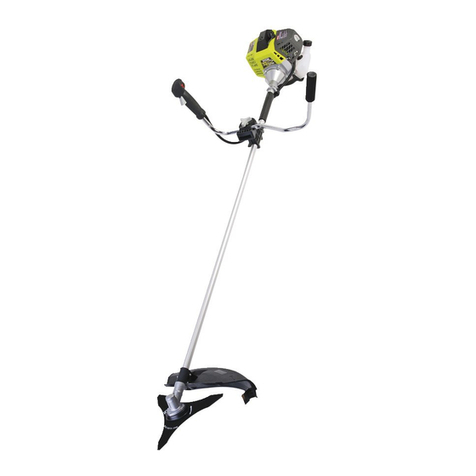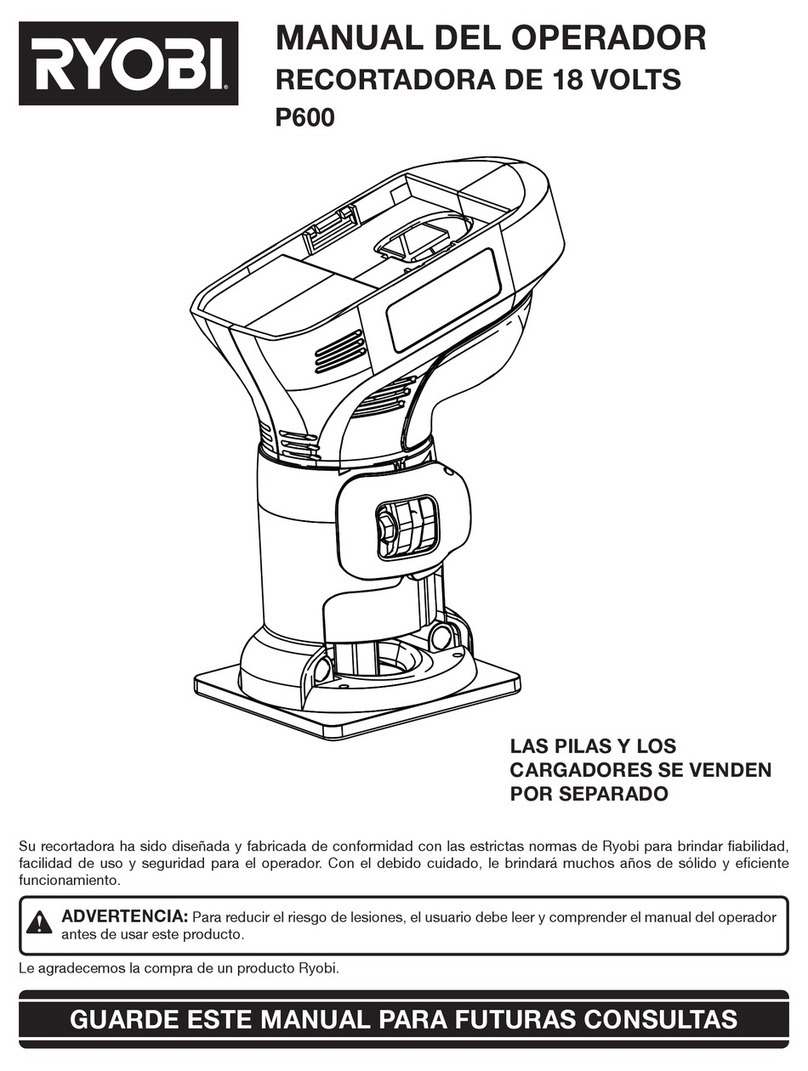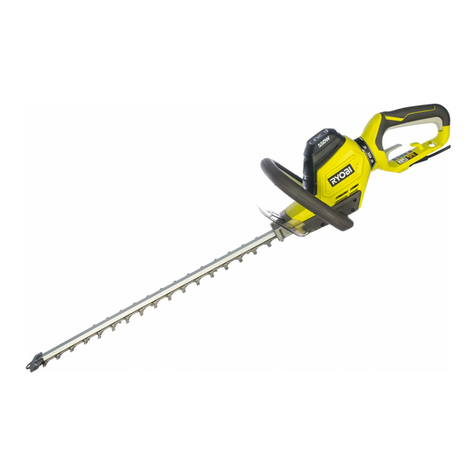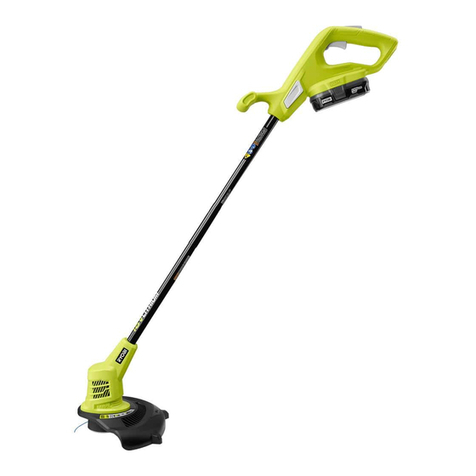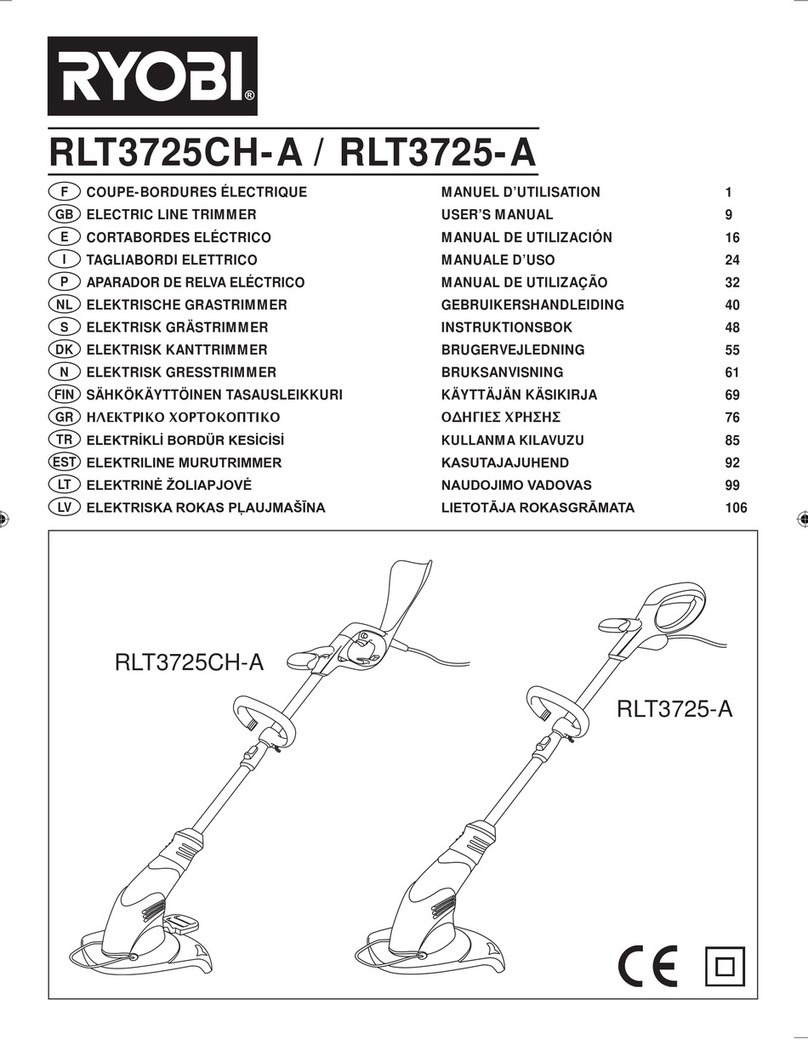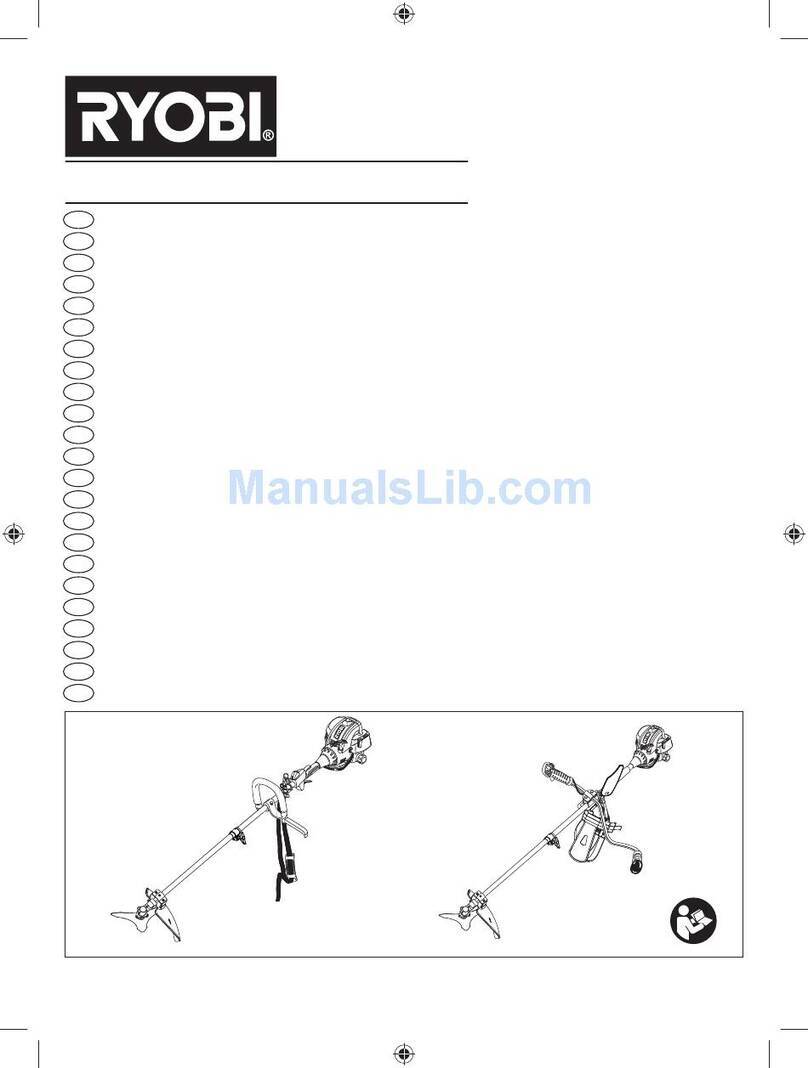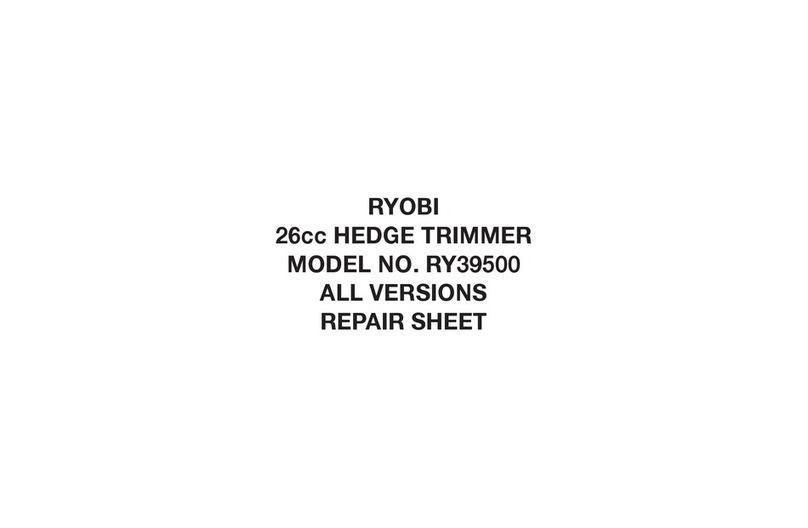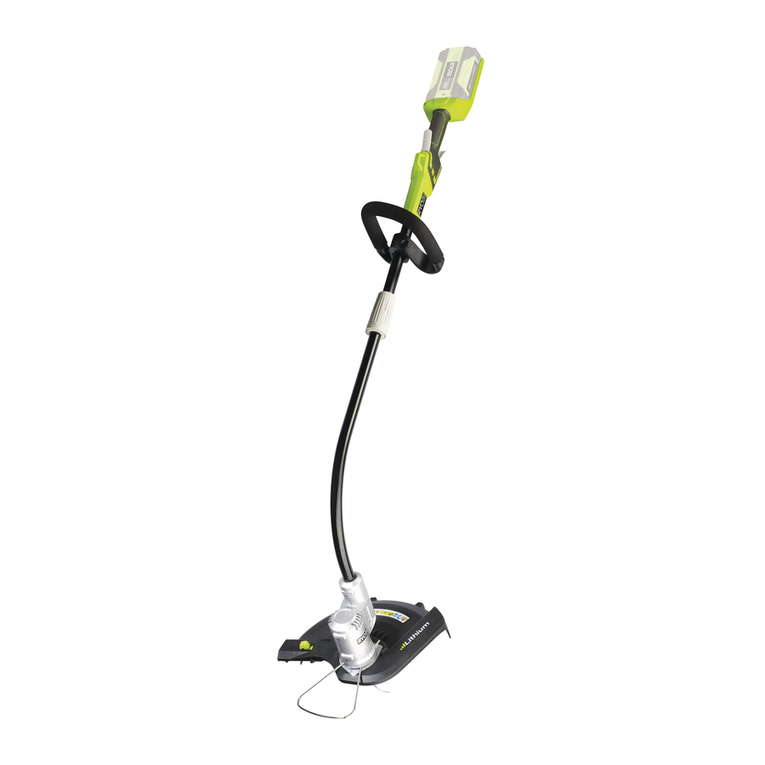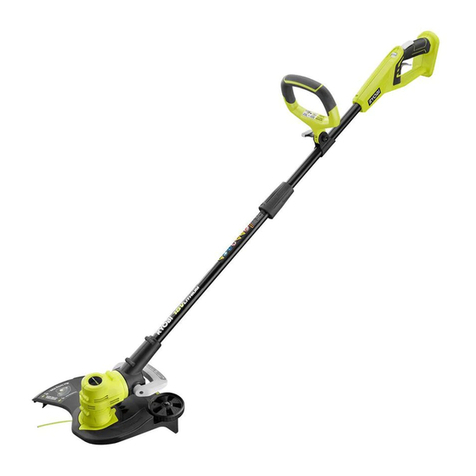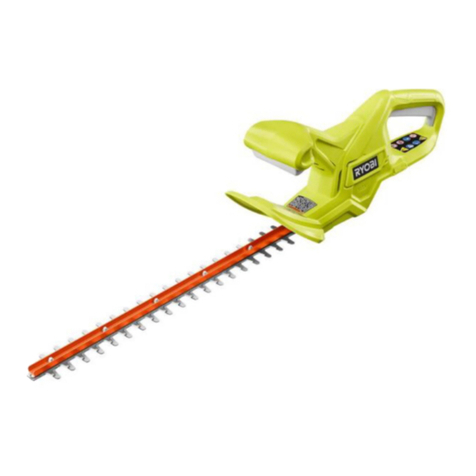
3 — English
GENERAL SAFETY RULES
WARNING:
Read and understand all instructions. Failure to follow all
instructions listed below may result in electric shock, fire
and/or serious personal injury.
READ ALL INSTRUCTIONS
For safe operation, read and understand all instructions
before using this product. Follow all safety instructions.
Failure to follow all safety instructions listed below, can
result in serious personal injury.
Do not allow children or untrained individuals to use this
unit.
Never start or run the engine in a closed or poorly venti-
lated area; breathing exhaust fumes can kill.
Clear the work area before each use. Remove all objects
such as rocks, broken glass, nails, wire, or string which
can be thrown or become entangled in the cutting line.
Always wear eye protection with side shields marked to
comply with ANSI Z87.1, along with hearing protection
when operating this product.
Wear heavy, long pants, long sleeves, boots, and gloves.
Do not wear loose fitting clothing, short pants, sandals,
or go barefoot. Do not wear jewelry of any kind.
Heavy protective clothing may increase operator fatigue,
which could lead to heat stroke. During weather that is
hot and humid, heavy work should be scheduled for early
morning or late afternoon hours when temperatures are
cooler.
ProductusersonUnitedStatesForestServiceland,andin
somestates, mustcomplywithfirepreventionregulations.
This product is equipped with a spark arrestor; however,
other user requirements may apply. Check with your
federal, state, or local authorities.
Secure long hair above shoulder level to prevent
entanglement in moving parts.
Keep all bystanders, children, and pets at least
50 ft. away. Bystanders should be encouraged to wear
eye protection. If you are approached, stop the engine
and cutting attachment.
Do not operate this unit when you are tired, ill, or under
the influence of alcohol, drugs, or medication.
Do not operate in poor lighting.
Keep firm footing and balance. Do not overreach.
Overreaching can result in loss of balance or exposure
to hot surfaces.
Keep all parts of your body away from any moving
part.
Do not touch area around the muffler or cylinder of the
unit; these parts get hot from operation.
Always stop the engine and remove the spark plug wire
before making any adjustments or repairs except for
carburetor adjustments.
Inspect the unit before each use for loose fasteners, fuel
leaks, etc. Replace any damaged parts before use.
The cutting attachment should never rotate at idle during
normal use. The cutting attachment may rotate at idle
during carburetor adjustments.
Ithasbeenreportedthatvibrationsfromgasolinepowered
tools may contribute to a condition called Raynaud’s
Syndrome in certain individuals. Symptoms may include
tingling, numbness, and blanching of the fingers, usually
apparent upon exposure to cold. Hereditary factors,
exposure to cold and dampness, diet, smoking, and work
practices are all thought to contribute to the development
of these symptoms. It is presently unknown what, if any,
vibrations or extent of exposure may contribute to the
condition. There are measures that can be taken by the
operator to possibly reduce the effects of vibration:
a) Keep yourbody warmincold weather. Whenoperating
the unit wear gloves to keep hands and wrists warm.
It is reported that cold weather is a major factor con-
tributing to Raynaud’s Syndrome.
b) After each period of operation, exercise to increase
blood circulation.
c) Take frequent work breaks. Limit the amount of
exposure per day.
d) Keep the tool well maintained, fasteners tightened,
and worn parts replaced.
If you experience any of the symptoms of this condition,
immediatelydiscontinue useand seeyour physicianabout
these symptoms.
Store fuel in a container approved for gasoline.
Mix fuel outdoors where there are no sparks or flames.
Wipe up any fuel spillage. Move 30 ft. away from refueling
site before starting engine. Slowly remove the fuel cap
after stopping engine. Do not smoke when refueling.
Stop the engine and allow to cool before refueling or
storing the unit.
Allowtheenginetocool,emptythefueltankintoacontainer
approved for gasoline, and secure the unit from moving
before transporting in a vehicle.
Wear your protective equipment and observe all safety
instructions. For units equipped with a clutch, be sure
the cutting attachment stops turning when the engine
idles.

